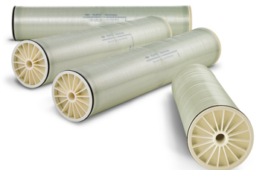FEA tools help researchers achieve more accurate earthquake predictions.
Massive destruction and loss of life followed the M9 (magnitude 9) Sumatra-Andaman earthquake and tsunami of December 26, 2004, one of the worst natural disasters in recorded history. But there was also a second major (M8.7) earthquake, 100 days later and a few kilometers to the south, along the same fault.
This second quake got little notice because it affected fewer people and caused no tsunami. But it represented a unique opportunity to Tim Masterlark, assistant professor of geodynamics in the Dept. of Geological Sciences at the Univ. of Alabama, Tuscaloosa. “To me that second quake was compelling,” he says. “It gave me a natural laboratory for studying how earthquakes interact with one another. Our primary objective is to see if we can come up with some sort of causal relationship that could lead to more accurate predictions of quakes and tsunamis in the future.”
First finite-element analysis of the quake
 |
Now, in a project funded by the NASA New Investigator Program, Masterlark and student Kristin Hughes are using the powerful capabilities of finite-element analysis (FEA) to integrate data from the Sumatra quakes into dynamic 3-D models he has created and refined over the years using the Abaqus Unified FEA software (Abaqus Standard and Abaqus/CAE) from SIMULIA, Providence, R.I., the Dassault Systèmes brand for Realistic Simulation. “There have been numerous papers published on the Sumatra-Andaman quake, but to my knowledge, ours will be the first finite-element model-based assessment of the event,” he says.
Realistic simulation is the most accurate way to recreate-and ultimately predict-earthquakes embedded in the known complexity of the Earth’s deformation systems. Before a quake, stress builds up along a fault that separates the massive, drifting tectonic plates. After an actual rupture, deformation of the region surrounding the fault can continue for months, years, or even decades. Much of the tectonic action occurs deep underground, out of reach of direct observation by scientists.
Surface deformation data are readily accessible, particularly GPS measurements and interferometric synthetic aperture radar (InSAR) imagery, which can track mm-scale movement of the Earth’s surface over time. More input comes from geologic field observations as well as an array of geophysical data, such as seismicity, seismic reflection and tomography, gravity measurements, and pressure measurements in water wells. Masterlark’s FEA models, which are configured to honor these data, help create unprecedented 4-D views of an inaccessible earthquake deformational system.
It’s all about simulation
 |
Unlike many geology laboratories in his department-which are filled with testing apparatus, measuring equipment, chemicals and, of course, rocks-Masterlark’s lab has little in it but computers and peripheral visualization equipment.
He uses Dell PC workstations with 32 GB of RAM and multiple core processors. “The combination of vast physical memory with these processors is wonderfully efficient for running large-scale models,” he says. “Accounting for the data, and optimizing model configurations and parameters for the problems I’m working on, takes thousands and thousands of models. My computers are running 24 hours a day.”
When modeling the Sumatra quakes, Masterlark set up a million-node, multi-geometry grid with three degrees of freedom for displacement plus others for variables such as pore pressure-the pressure of the fluid contained in the pore spaces of rocks. Abaqus has been his tool of choice for years.
“It does pretty much everything I ask it to do,” he says. “The flexibility of the code allows me to simulate the rich complexity of a natural earthquake system.”
However an earthquake is modeled, the investigator today is dependent on inverse analyses, working backwards from data collected after an event (what we can directly observe at the Earth’s surface) to estimate the characteristics of fault-slip at depth (what we cannot directly observe). The promise of forward models, driven by the estimated fault-slip, is that they will predict the location and time of future events-a rupture beneath the ocean floor, for example, that might catastrophically deform the ocean bedrock and produce a tsunami.
A break from simple analytical solutions
Masterlark’s methods are different from those used by the vast majority of geophysicists, who rely on simplified analytical solutions collectively known as HIPSHS models (homogeneous, isotropic, Poisson-solid half-spaces-each letter stands for a simplifying assumption about the natural configuration of the Earth’s structure), with unreliable or ambiguous results, he finds.
“An HIPSHS model is a closed-form analytical solution that satisfies the governing equations that describe the deformation response to fault-slip,” he explains. “It’s simple and fast, but not very accurate. I found out that the assumptions in HIPSHS models can be overwhelming sources of error in inverse analyses, particularly the assumption of homogeneity.” In other words, because the structure of the Earth is never uniform to begin with, the simplicity of an HIPSHS model often leads to misleading interpretations of GPS and other data collected after a quake.
Building a better earthquake
This is where Masterlark’s FEA models come out ahead in terms of accurate representations of the data. “By using Abaqus, I can create any kind of geometry I want,” he says. To simulate the heterogeneous, real-world Earth, Masterlark builds his complex 3-D models by assigning different material properties to different regions, using the Abaqus soils module (a subset of the materials database).
The fault-slip of an earthquake can be easily simulated via boundary condition specifications and kinematic constraint equations, he notes. And by assigning various material properties to the different regions, he can recreate the displacement and pore pressure of the coseismic (during a quake) response. Then in the postseismic (after the quake) phase, he uses the Abaqus creep capability to model the viscoelastic deformation, which slowly relaxes the earthquake-induced stress in the lower crust and upper mantle, along with the decay of pore pressure in the upper crust over time. Both of these postseismic deformation mechanisms, viscoelastic and poroelastic relaxation, cause continuing deformation of the Earth’s surface that can be measured with GPS data and InSAR imagery.
“I can investigate things like poroelasticity and viscoelasticity all in the same model-all I have to do is swap out material properties specifications-it’s very easy to do,” Masterlark says. “The better the model simulates reality, the more reliable or closer to the truth the predictions will be.”
Although results from running quakes through his most recent models are coming ever closer to GPS and other data, “we are still trying to figure out precisely what information we need to refine the model even further,” Masterlark says.
“As I try to couple the two Sumatra quakes together, we are getting more accurate with the spatial aspect of what went on. Now it’s the timing we are trying to pin down. In the long run, the more accurate models we can build, the better we can simulate stress propagation and pore pressure changes. Then maybe we can say, ‘look out on that section of fault down there, we think there’s another quake coming.’ That’s the ultimate goal of the research.”
Modeling’s bright future
Other scientists are beginning to notice Masterlark’s work. Through a contact made on a cruise over the epicenter of the Sumatra quake in the Indian Ocean, he is working with a group planning to take further geophysical measurements on the site. “We’ve got the models-now we need more data,” says Masterlark.
He is pleased to be included in the inquiry. “This type of opportunity is happening more frequently. Being a modeler, and having an expertise with a powerful code like Abaqus, enables me to be very helpful to a lot of people with data who want it modeled right.”
Masterlark knows that truly accurate predictions of quakes and tsunamis will take years of group effort. “There are so many aspects of deformation modeling and tsunami modeling. We all have to collaborate. But with the tools that are now becoming available, it would not surprise me if someone had reliable causal models worked out by the end of my career. So I’m making a prediction on predictions.”
– Tim Masterlark
Assistant professor of geodynamics, Univ. of Alabama
| Earthquake Geology Glossary Coseismic: Happening at the same time as an earthquake. Creep: A software module used to simulate flowing (viscous) materials. Deformation: A change in shape of a region caused by fault-slip. Fault: The boundary (a surface) between converging tectonic plates. Fault-slip: The rupture, along a fault, that releases some of the stress and causes an earthquake. Forward analysis: Simulating fault-slip and predicting deformation, stress, and pore pressure. HIPSHS: Simplifying assumptions about the natural configuration of the Earth’s structure used to describe an earthquake. InSAR: Interferometric synthetic aperture radar, a form of satellite radar that can map vertical displacement of the earth’s surface. Inverse analysis: Using the deformation observed at the Earth’s surface (what we can directly observe) to estimate the inaccessible fault-slip, or source of deformation, at depth. Pore pressure: Pressure of the fluid contained in the pore spaces of rocks. Poroelastic: Coupling of stress in a rock and fluid pressure in the pores of the rock. Postseismic: Occurring over a period of time following an earthquake. Tsunami: An immense sea wave that resluts from deformation of the ocean floor, which in turn changes the shape of the overlying ocean surface. Viscoelastic: A material that initially behaves elastically, but then flows like a fluid over long time intervals. |




